Abstract
Blockade of cardiac autonomic nervous activity by an intravenous injection of 0.2 mg/kg propranolol and 0.04 mg/kg atropine was used with cardiac catheterization to study intrinsic cardiac function in 47 patients with normal hearts and known graded myocardial disease. After blockade, significant hemodynamic abnormalities became apparent at rest in the majority of patients with known disease, many of whom had normal control findings. This occurred partly through a reduction in the normal range of cardiac function at rest, and partly through changes in the abnormalities associated with disease: after blockade, diseased hearts had normal stroke volumes, but beat more slowly, and had higher left ventricular filling pressures. The heart rate after blockade was fixed; this was defined as the intrinsic heart rate (IHR); it ranged from 57 to 126 beats/min in different patients. Both the IHR and left ventricular end-diastolic pressure after blockade were sensitively and quantitatively related to the severity of myocardial disease. When, after blockade, arterial pressure was raised by angiotensin, the IHR was unchanged; normal hearts maintained their stroke volume and increased stroke work; diseased hearts maintained stroke volume less well and stroke work was unchanged or fell. Abnormal ventricular responses corresponded well with abnormal ventricular function at rest.
In different patients the IHR was significantly related to each available index of left ventricular function. Other studies in animals have shown that the IHR is closely related to intrinsic myocardial contractility in certain forms of experimental heart failure. An analogous relationship existing between the IHR and myocardial function in patients with heart disease is suggested as the explanation for the IHR/ventricular function relationship in this study. If so, the IHR may prove valuable as an index of myocardial function in man, since it can be measured simply and safely in clinical practice.
Full text
PDF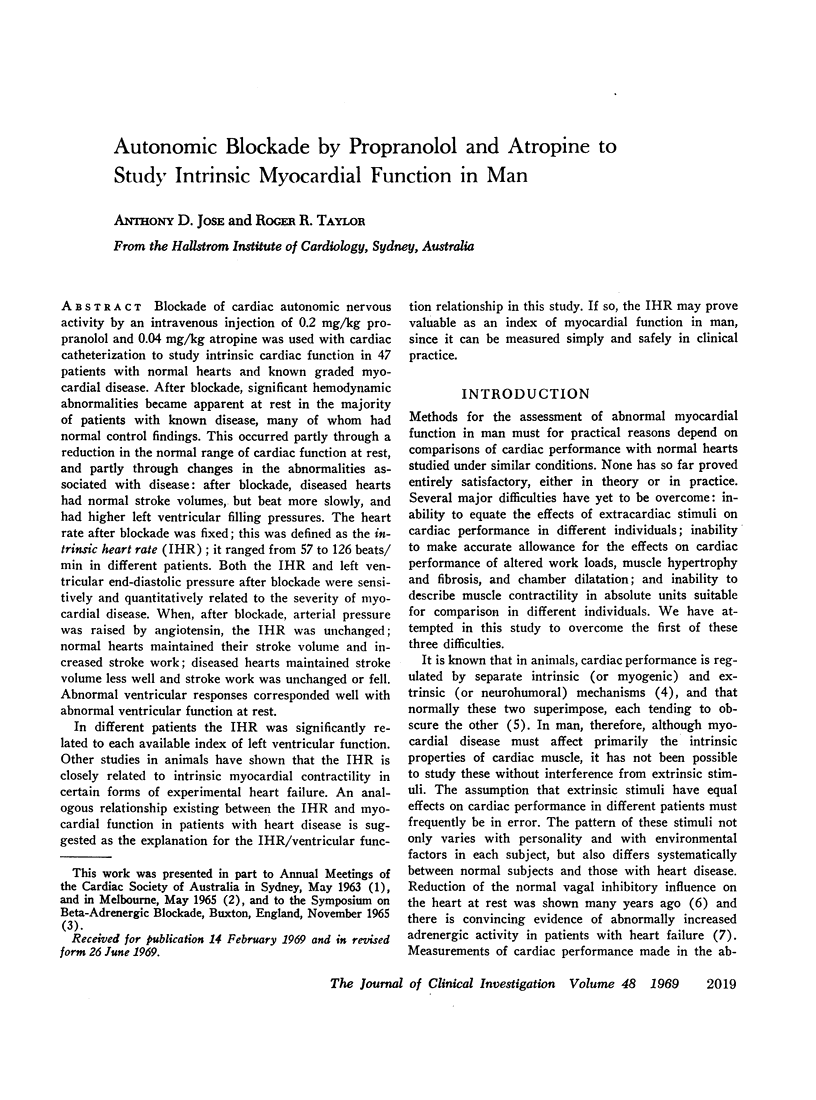
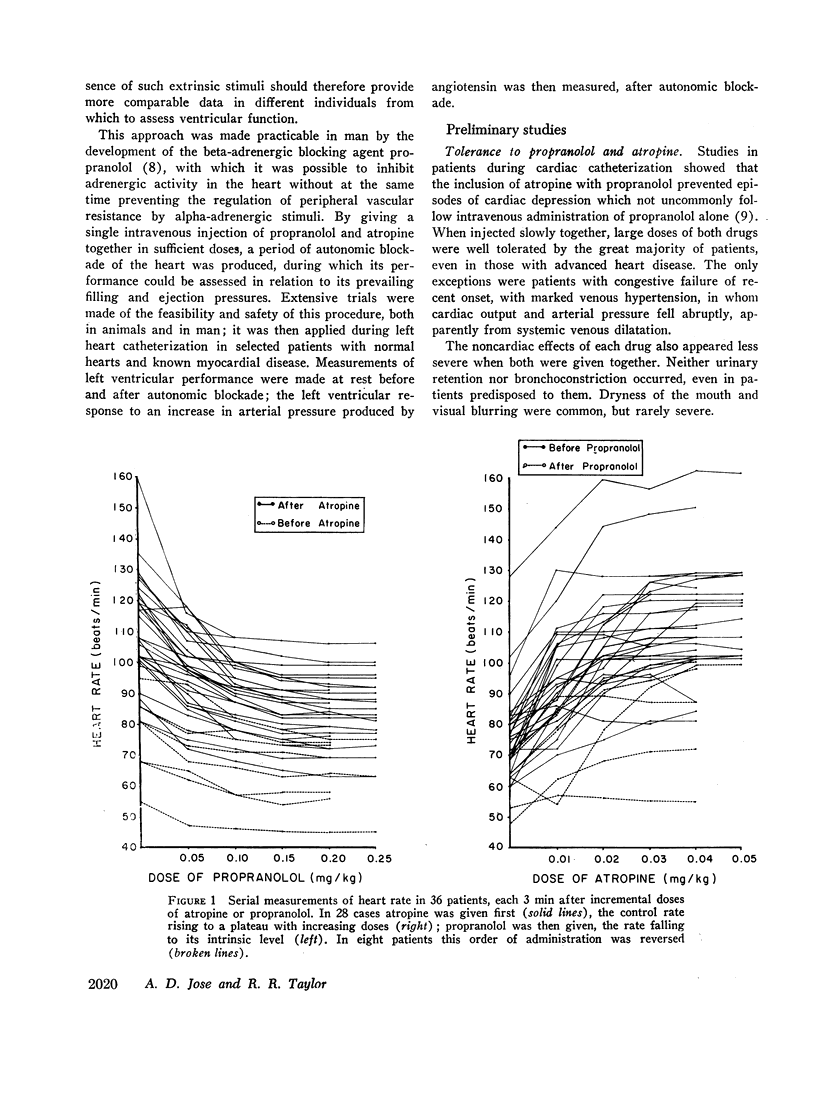
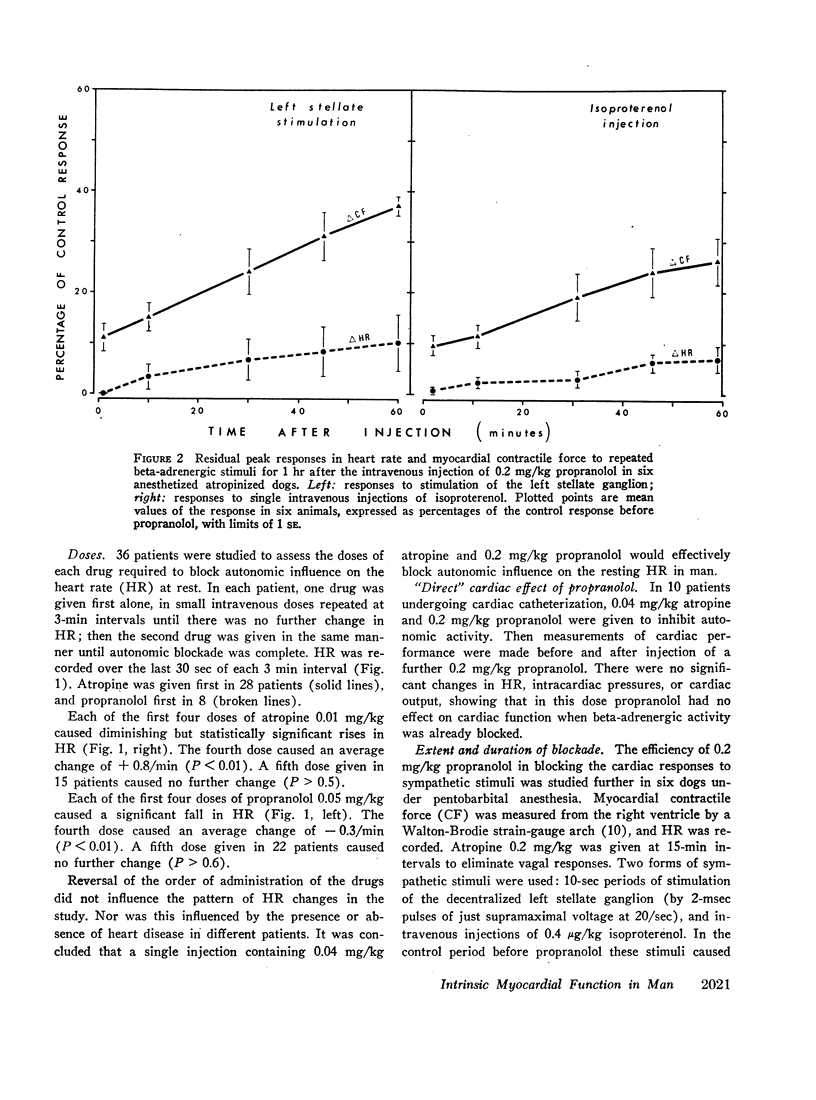
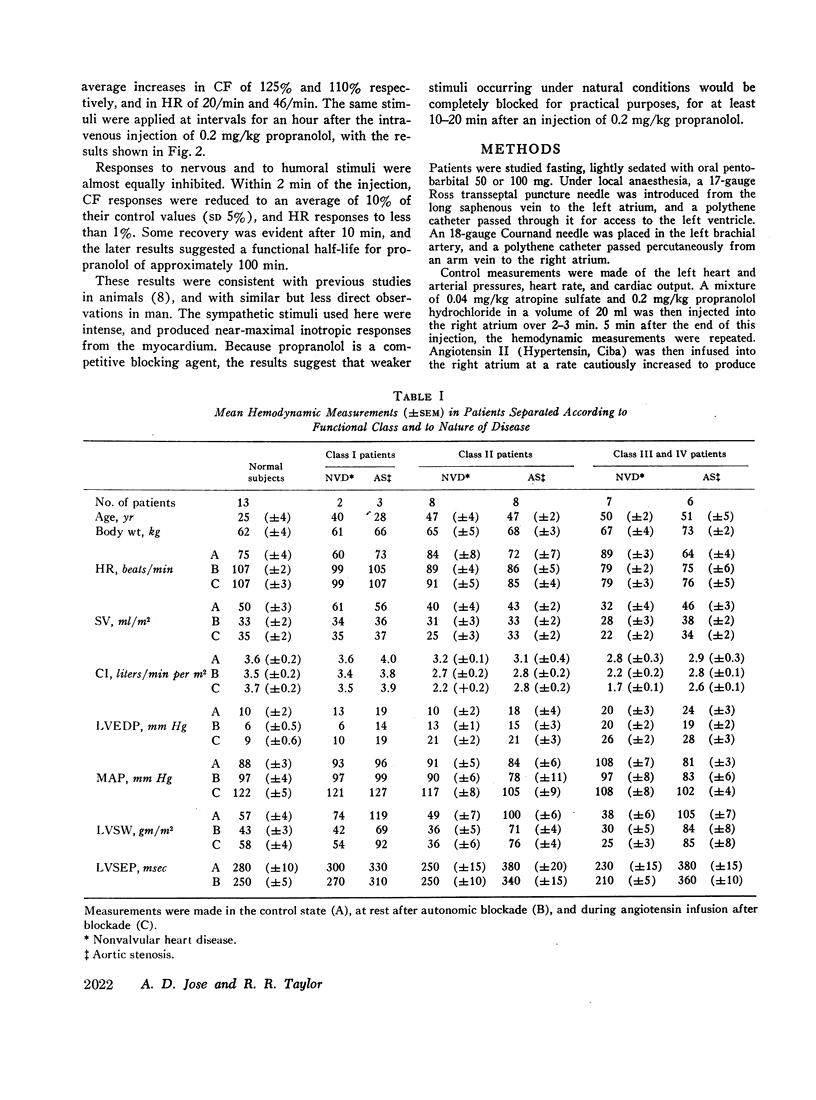
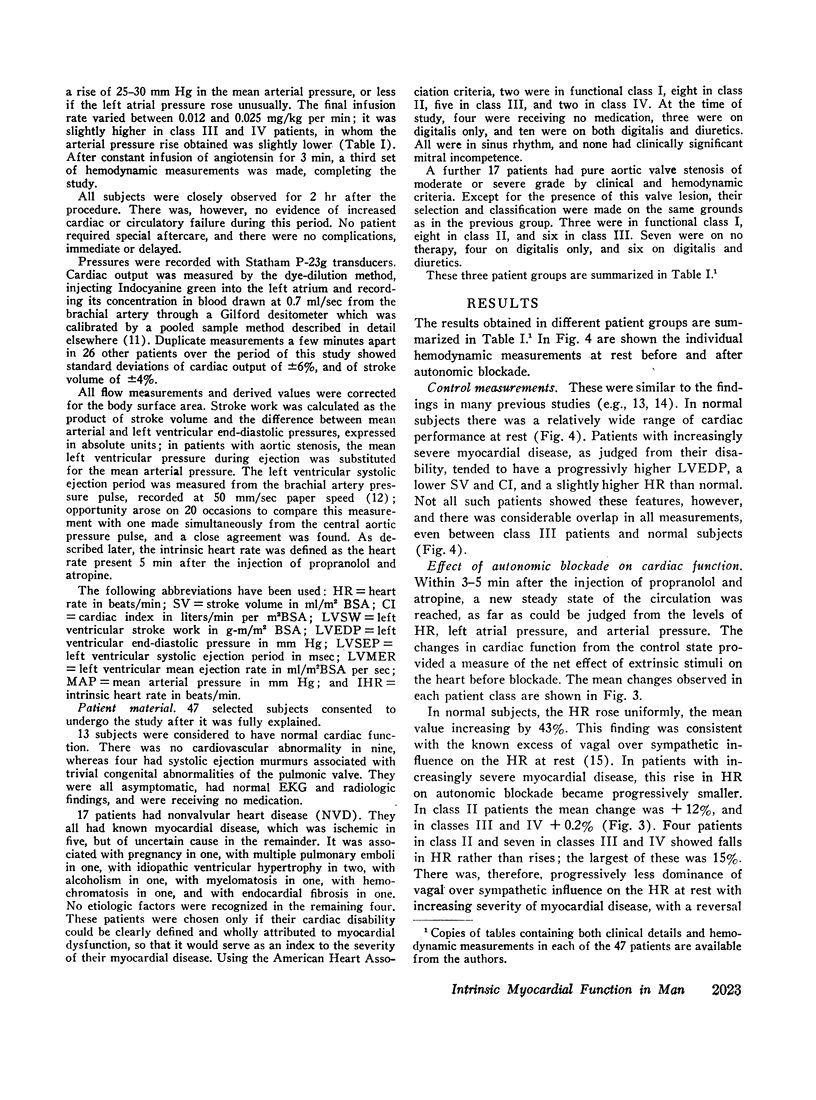
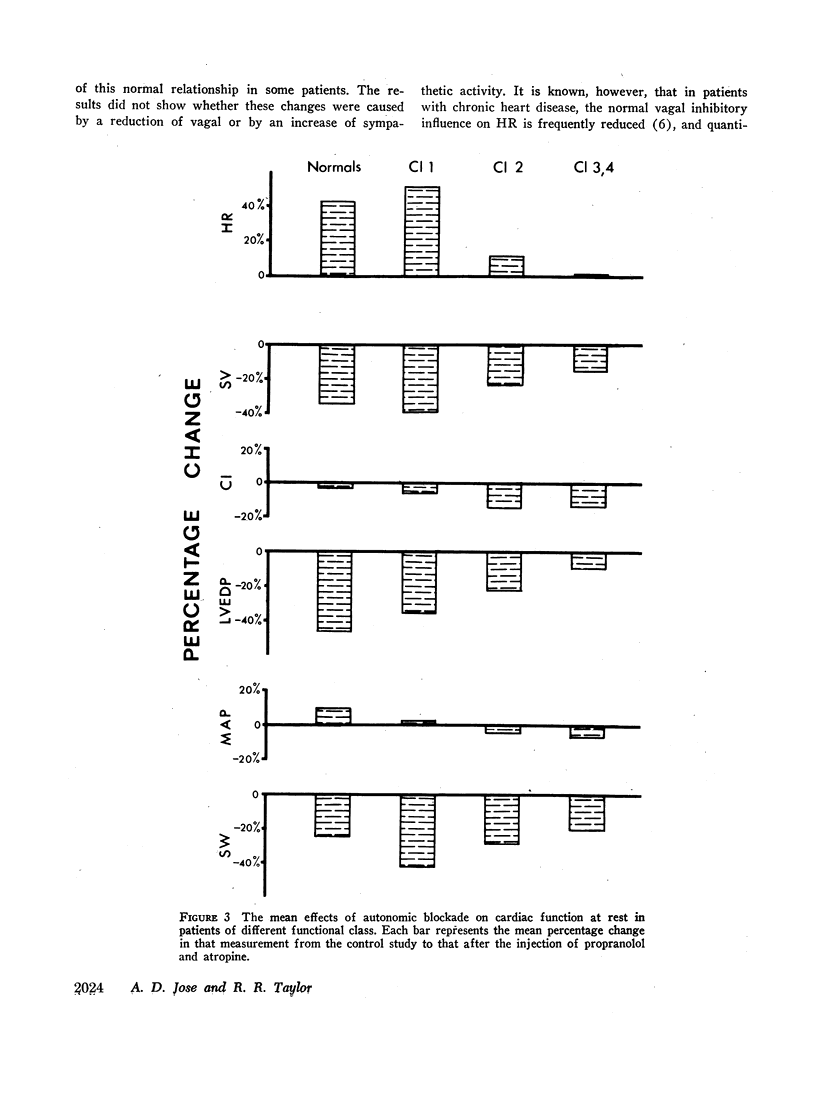
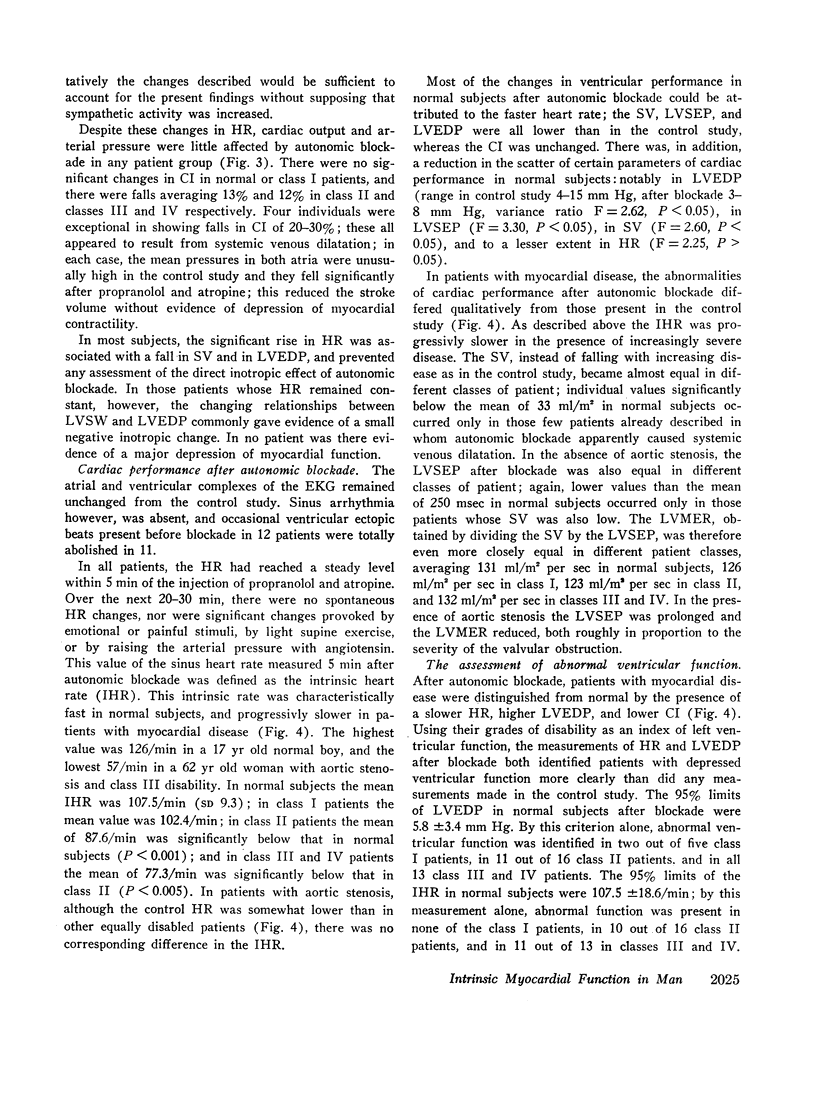
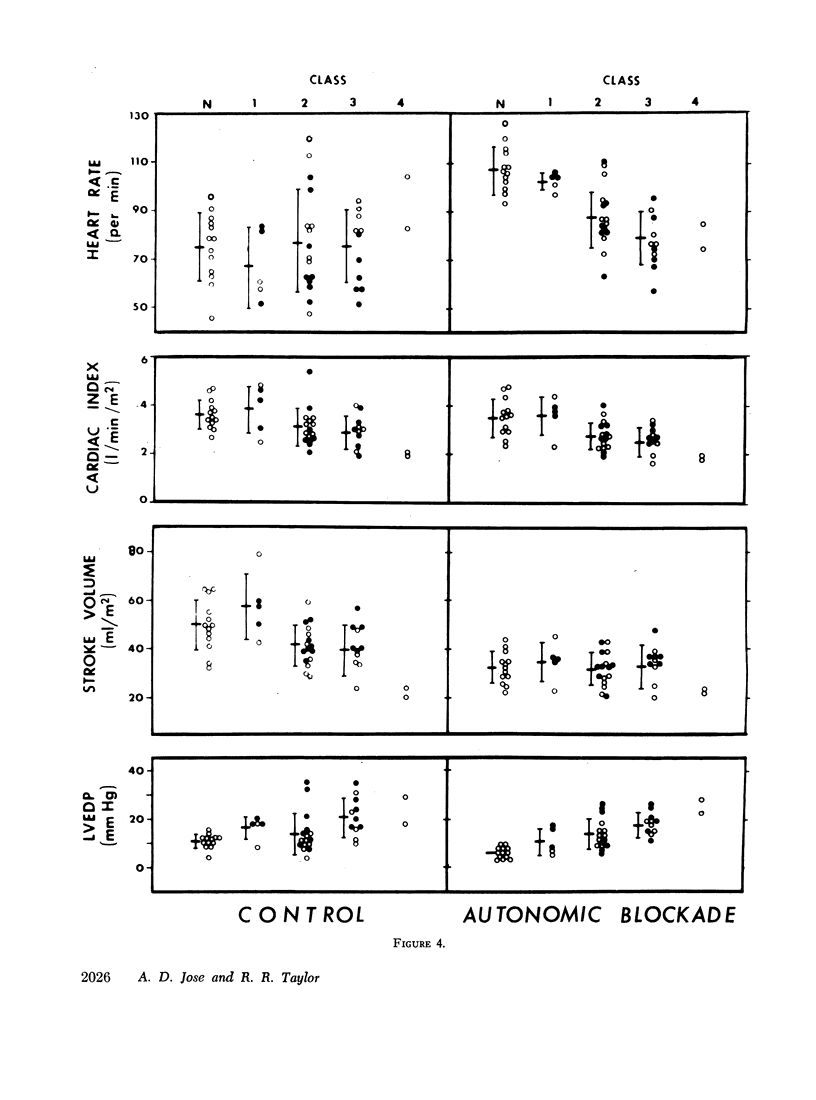

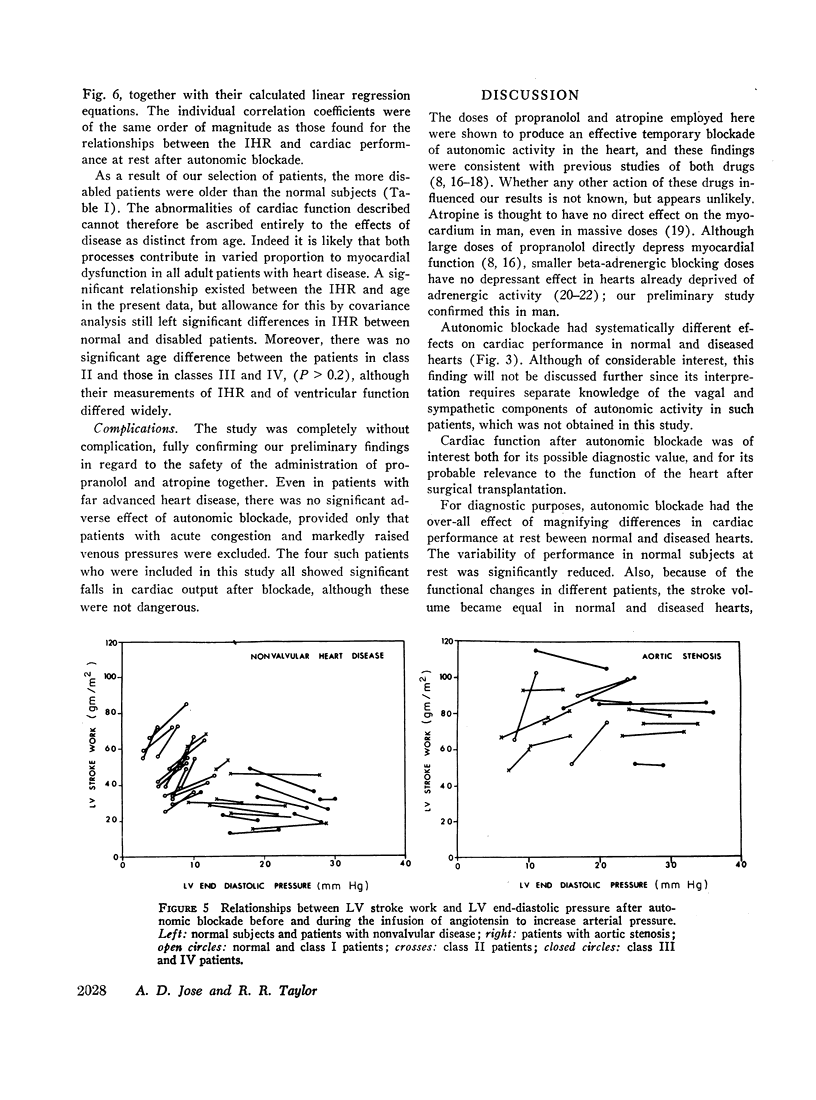
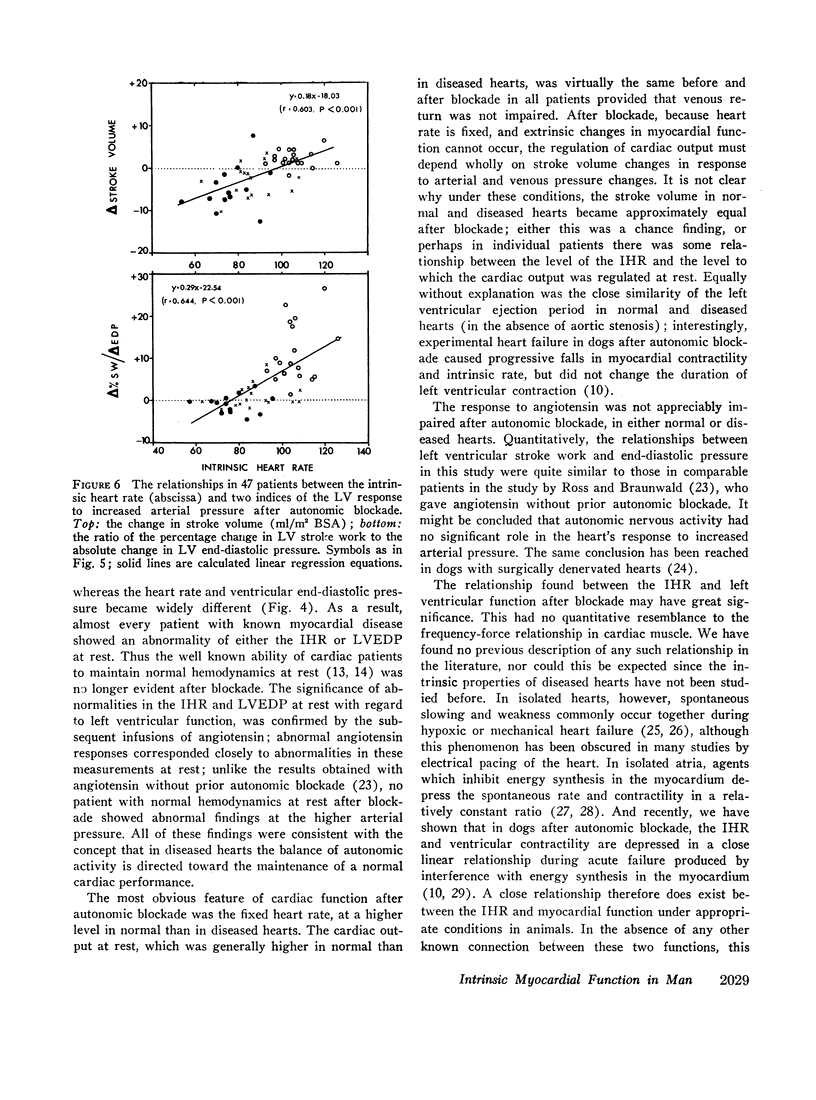
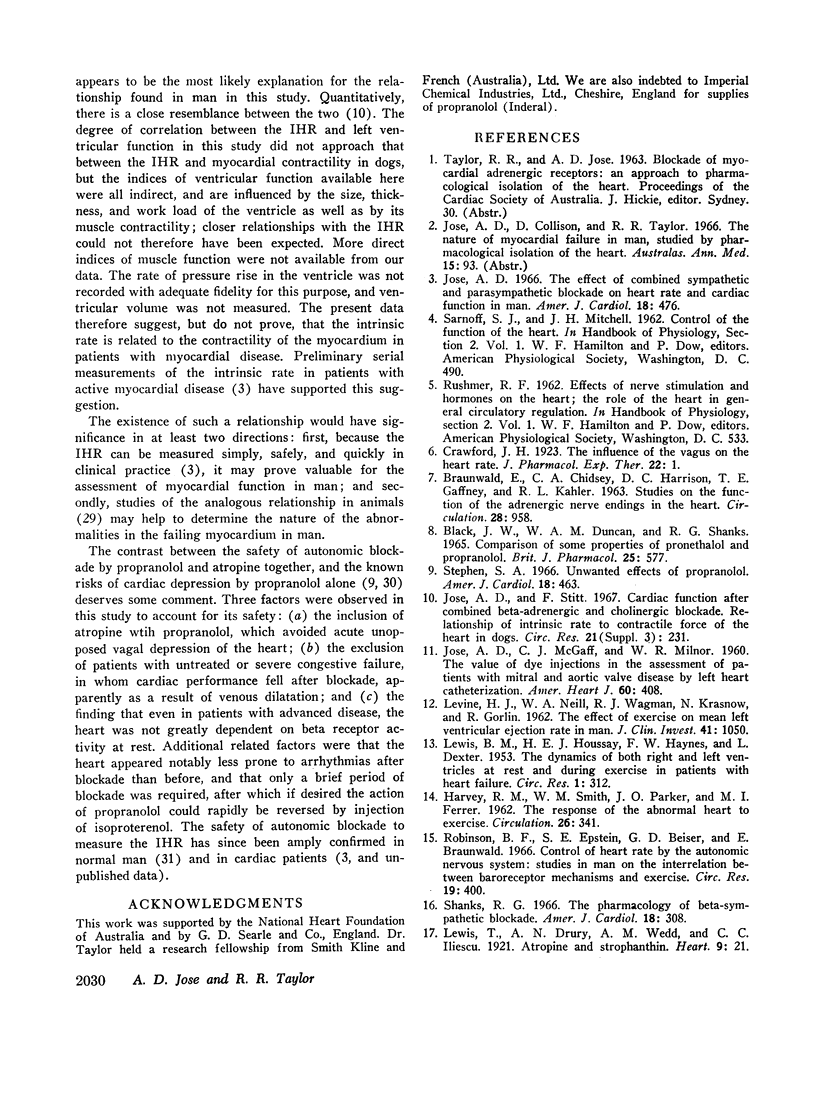
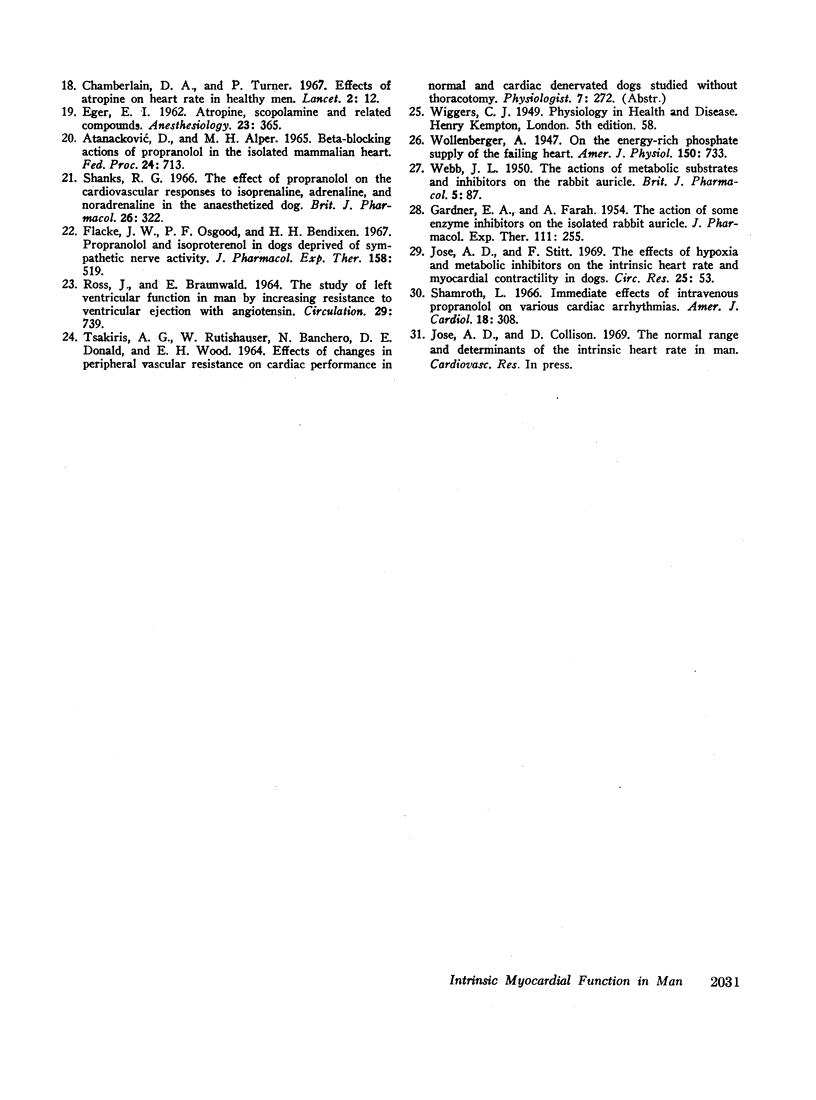
Selected References
These references are in PubMed. This may not be the complete list of references from this article.
- BRAUNWALD E., CHIDSEY C. A., HARRISON D. C., GAFFNEY T. E., KAHLER R. L. STUDIES ON THE FUNCTION OF THE ADRENERGIC NERVE ENDINGS IN THE HEART. Circulation. 1963 Nov;28:958–969. doi: 10.1161/01.cir.28.5.958. [DOI] [PubMed] [Google Scholar]
- Chamberlain D. A., Turner P., Sneddon J. M. Effects of atropine on heart-rate in healthy man. Lancet. 1967 Jul 1;2(7505):12–15. doi: 10.1016/s0140-6736(67)90057-8. [DOI] [PubMed] [Google Scholar]
- EGER E. I., 2nd Atropine, scopolamine, and related compounds. Anesthesiology. 1962 May-Jun;23:365–383. doi: 10.1097/00000542-196205000-00012. [DOI] [PubMed] [Google Scholar]
- GARDNER E. A., FARAH A. The action of some enzyme inhibitors on the isolated rabbit auricle. J Pharmacol Exp Ther. 1954 Jul;111(3):255–264. [PubMed] [Google Scholar]
- HARVEY R. M., SMITH W. M., PARKER J. O., FERRER M. I. The response of the abnormal heart to exercise. Circulation. 1962 Sep;26:341–362. doi: 10.1161/01.cir.26.3.341. [DOI] [PubMed] [Google Scholar]
- JOSE A. D., McGAFF C. J., MILNOR W. R. The value of injections of dye into the left heart in the study of mitral and aortic valvular disease by catheterization of the left heart. Am Heart J. 1960 Sep;60:408–416. doi: 10.1016/0002-8703(60)90200-3. [DOI] [PubMed] [Google Scholar]
- Jose A. D. Effect of combined sympathetic and parasympathetic blockade on heart rate and cardiac function in man. Am J Cardiol. 1966 Sep;18(3):476–478. doi: 10.1016/0002-9149(66)90073-7. [DOI] [PubMed] [Google Scholar]
- Jose A. D., Stitt F. Effects of hypoxia and metabolic inhibitors on the intrinsic heart rate and myocardial contractility in dogs. Circ Res. 1969 Jul;25(1):53–66. doi: 10.1161/01.res.25.1.53. [DOI] [PubMed] [Google Scholar]
- LEVINE H. J., NEILL W. A., WAGMAN R. J., KRASNOW N., GORLIN R. The effect of exercise on mean left ventricular ejection rate in man. J Clin Invest. 1962 May;41:1050–1058. doi: 10.1172/JCI104555. [DOI] [PMC free article] [PubMed] [Google Scholar]
- LEWIS B. M., HOUSSAY H. E., HAYNES F. W., DEXTER L. The dynamics of both right and left ventricles at rest and during exercise in patients with heart failure. Circ Res. 1953 Jul;1(4):312–320. [PubMed] [Google Scholar]
- ROSS J., Jr, BRAUNWALD E. THE STUDY OF LEFT VENTRICULAR FUNCTION IN MAN BY INCREASING RESISTANCE TO VENTRICULAR EJECTION WITH ANGIOTENSIN. Circulation. 1964 May;29:739–749. doi: 10.1161/01.cir.29.5.739. [DOI] [PubMed] [Google Scholar]
- Robinson B. F., Epstein S. E., Beiser G. D., Braunwald E. Control of heart rate by the autonomic nervous system. Studies in man on the interrelation between baroreceptor mechanisms and exercise. Circ Res. 1966 Aug;19(2):400–411. doi: 10.1161/01.res.19.2.400. [DOI] [PubMed] [Google Scholar]
- Shanks R. G. The effect of propranolol on the cardiovascular responses to isoprenaline, adrenaline and noradrenaline in the anaesthetized dog. Br J Pharmacol Chemother. 1966 Feb;26(2):322–333. doi: 10.1111/j.1476-5381.1966.tb01911.x. [DOI] [PMC free article] [PubMed] [Google Scholar]
- Shanks R. G. The pharmacology of beta sympathetic blockade. Am J Cardiol. 1966 Sep;18(3):308–316. doi: 10.1016/0002-9149(66)90047-6. [DOI] [PubMed] [Google Scholar]
- Shanks R. G. The pharmacology of beta sympathetic blockade. Am J Cardiol. 1966 Sep;18(3):308–316. doi: 10.1016/0002-9149(66)90047-6. [DOI] [PubMed] [Google Scholar]
- Stephen S. A. Unwanted effects of propranolol. Am J Cardiol. 1966 Sep;18(3):463–472. doi: 10.1016/0002-9149(66)90071-3. [DOI] [PubMed] [Google Scholar]
- WEBB J. L. The actions of metabolic substrates and inhibitors on the rabbit auricle. Br J Pharmacol Chemother. 1950 Mar;5(1):87–117. doi: 10.1111/j.1476-5381.1950.tb00580.x. [DOI] [PMC free article] [PubMed] [Google Scholar]


